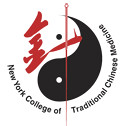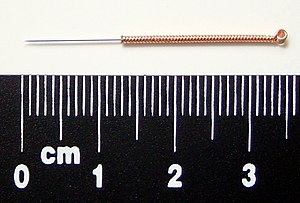 Image by NYCTCM via FlickrBudget Beauty: Manicured Without Getting Clipped - Frugal Traveler Blog - NYTimes.com
Image by NYCTCM via FlickrBudget Beauty: Manicured Without Getting Clipped - Frugal Traveler Blog - NYTimes.comMatt Gross, NY Times Blogger for "Frugal Traveler" writes about his visit to NYCTCM Acupuncture Clinic in Manhattan.
"As the needle went into my skin, somewhere between the two biggest toes on my left foot, I felt an almost electrical jolt—my metatarsal bones pulsed with energy, like a muscle cramp but completely painless. It was as if my entire foot were a neon sign that had never been switched on before.
“Wow,” I think I said, and the four people in white lab coats observing me hurried to ask if I was okay. Was it a burning pain? No. Was it subsiding? Um, maybe a little. Okay, then everything was fine.
Then they stuck more needles in me.
For aficionados of acupuncture, this is old hat. According to the tenets of Chinese medicine, tapping skinny needles into your pressure points is an age-old way of rebalancing the body and restoring, or ensuring, general health.
The first stop, at 10:30 a.m., was the New York College of Traditional Chinese Medicine (13 East 37th Street; 212-685-0888, nyctcm.edu), an accredited school with three- and four-year degree programs in acupuncture and Chinese herbology. It is located on the fourth floor of one of those anonymous office buildings in the East 30s, just north of Murray Hill. Inside, the school felt like a regular doctor’s office, with forms to fill out detailing medical history and current problems, and lots of people in white lab coats...
After answering some intimate questions about my gastrointestinal workings, I was escorted into the treatment room, where I undressed, put on a paper hospital gown and lay down on a table. The needles went in, most of them painlessly, but every once in a while — like when they went into my foot or lower back — the feeling was incredible. I don’t know how much store I put in Chinese medicine, but those pressure points are definitely connected to deep systems in the human body."
Visit New York College of Traditional Chinese Medicine Acupuncture Clinic
New York College of Traditional Chinese Medicine (NYCTCM)'s Teaching Clinic offers affordably priced Acupuncture and Chinese Healing Arts to the community while providing our advanced students with a clinical internship.
Our interns are senior-level students who have passed a series of qualifying exams that allow them to diagnose and prescribe therapies for the patients who come to our clinic. Licensed Acupuncturists and Traditional Chinese Medicine practitioners supervise our interns. Many of our supervisors have M.D. degrees from China, and all have considerable clinical and teaching experience.
Traditional Chinese Medicine or TCM encompasses both acupuncture and Chinese Herbal Medicine. While acupuncture is perhaps the most widely recognized area of TCM, Chinese Herbal Medicine is also very important in your treatment. Chinese Herbal Medicine administers natural herbal formulas specifically designed to correct imbalances in the body, aiding in the treatment of disease. Our clinic provides Acupuncture Therapy, Herbal Prescriptions, Nutrition Counseling and Massage Therapy.



![Reblog this post [with Zemanta]](http://img.zemanta.com/reblog_e.png?x-id=8b4a3251-285b-4710-8ea6-78f1a1fb12d4)

![Reblog this post [with Zemanta]](http://img.zemanta.com/reblog_e.png?x-id=7b2f351c-e0d6-46d6-bc9d-330687e1d943)




